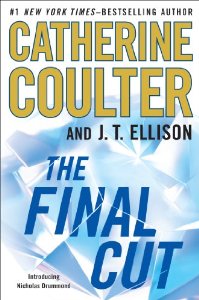I won’t bore you with a lengthy essay on how the world of publishing can
feel like a vast, unknowable, and terrifying behemoth to a debut author.
I
figure if you’re reading this there’s a pretty good chance you’ve
already figured that out. Instead, I’ll take this opportunity to share the
knowledge I’ve acquired in my one-and-a-half year career as a published
author.
I’m using the “Top Ten” format to make everything as concise and
helpful as possible, but I should point out right off the bat that there
may not be enough knowledge to make it all the way to #10. Let’s find
out, shall we?
#1. Don’t Write Top Ten Lists.
I’m told Top Ten lists are much more likely to get quoted and shared and emailed around the Internet, thereby reaching more readers (and thus more book-buyers), but a Google search of the phrase “Top Ten List” produces a catalog of roughly 1,700,000,000 entries. Try to be more original. For example, a Google search for “Top Three and 1/2 List” gets zero results. Write a Top Three and 1/2 List and you’ll stand out like a sore thumb. You’re welcome.
#2. Writer’s Conferences. Go to them.
#1. Don’t Write Top Ten Lists.
I’m told Top Ten lists are much more likely to get quoted and shared and emailed around the Internet, thereby reaching more readers (and thus more book-buyers), but a Google search of the phrase “Top Ten List” produces a catalog of roughly 1,700,000,000 entries. Try to be more original. For example, a Google search for “Top Three and 1/2 List” gets zero results. Write a Top Three and 1/2 List and you’ll stand out like a sore thumb. You’re welcome.
#2. Writer’s Conferences. Go to them.
If, like me, you don’t enjoy
conferences or big crowds of people in general, go to them anyway. I
prefer small groups of people. Three is ideal, four is pushing it.
Plus I have a bad case of (self-diagnosed) Central Auditory
Processing Disorder, a physical and/or neurological and/or
psychological impairment that affects the ear, whose job it is to
separate essential sound from background noise and deliver only the
essential sound to the intellectual center of the brain.
Although I’m not
altogether certain my brain has an intellectual center, I do know that I
go into overload whenever I’m in a room filled with talking people. A
writer’s conference is essentially a room filled with talking people,
but I’ve attended three conferences so far, and I can say without hesitation
that writers, and in particular, mystery writers, are the most
helpful, supportive and generous people in the world. You’d be amazed how
much encouragement and inspiration you can get from talking to other
writers, and you’ll make great friends.
#3. Don’t read reviews of your book.
#3. Don’t read reviews of your book.
No matter how tempting. Not even the
good ones. There’s no better way to fuck up your inner voice than to let
other voices in. I curse because I mean it.
#3 1/2. Don't spend too much time reading blogs about writing and the publishing industry.
#3 1/2. Don't spend too much time reading blogs about writing and the publishing industry.
(Or, for that matter, playing online Scrabble with
Facebook friends from high school). It's accepted wisdom that your
second book will be harder to write than your first. I learned that at a
conference and it's true. So don't sweat it. Just close your web browser
and go write for a while.
BIO:
John Clement is the author of the popular Dixie Hemingway Mystery Series created by his mother, writer Blaize Clement (1932-2011). The eighth book in the series, The Cat Sitter’s Cradle (2013 St. Martins/Minotaur) received unanimous praise from fans and critics alike. The Cat Sitter’s Nine Lives will appear July, 2014. John lives in New York City, where he’s currently working on the 10th book in the series.
THE CAT SITTER'S CRADLE: Blaize Clement won fans all over the world with the charm and wit of her pet-sitting mysteries. Now, with the help of her son, author John Clement, Blaize’s beloved heroine Dixie Hemingway is back for yet another thrilling adventure in this critically-acclaimed series.
In fact, her pet-sitting business is going so well she’s even taken on part-time
help: Kenny, a handsome young surfer who lives alone in a rickety old houseboat. Things get a little messy, however, when on an early morning walk in the park with a client’s schnauzer, Dixie makes a shocking discovery. Hidden among the leafy brambles is a homeless girl, alone and afraid, cradling a newborn baby in her arms.
Dixie takes the young girl under her wing, even though she’s just been hired by Roy Harwick, the snarky executive of a multi-national oil and manufacturing company, to care for his equally snarky Siamese cat, Charlotte, along with his wife’s priceless collection of rare tropical fish. It’s not long before Dixie stumbles upon a dead body in the unlikeliest of places, and soon she’s set adrift in a murky and dangerous world in which no one is who they appear to be.
Smart, fast-paced and entertaining, The Cat Sitter’s Cradle is a perfect illustration of why Dixie’s loyal fans have come to know and love her and eagerly await the next installment of her adventures.














